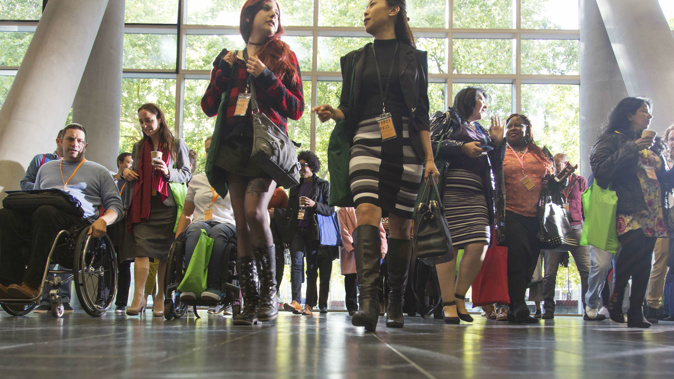
New Zealand's resident population has now reached 5 million.
Stats NZ announced today that we cracked the milestone in March.
It took just 17 years to add one million people after hitting 4 million in 2003.
"This is a significant event for New Zealand," population insights senior manager Brooke Theyers said.
Stats NZ conceded they can't tell whether our 5 millionth person was a new migrant who arrived in New Zealand on a plane, or if it was a newborn baby.
The precise date for when we hit 5 million is not yet available. Population estimates need to be revised to incorporate all 2018 Census data, which will happen later this year, and international migration estimates need to be revised.
The final date could be slightly earlier or later than March, but it's estimated that at March 31 had a resident population of 5,002,100, Stats NZ says.
According to previous statistics Northland is the fastest-growing region in the country, with more than 27,000 more people living in the region than five years ago.
Latest Census figures from 2018 released by Stats New Zealand show Northland registered an 18.1 per cent growth between 2013 and 2018 to sit at 179,076, followed by Bay of Plenty (15.2 per cent), and Waikato (13.5 per cent).
The West Coast was the only region where population declined, down 1.8 per cent to 31,575.
Mangawhai rural recorded the largest population growth of 702 over that period, followed by 633 at Waipū, and 537 at Kaiwaka.
Northland councils have made provisions in their policy documents to cater for expected population rise that will put more pressure on existing infrastructure and demand for housing.
Whangārei District Council chief executive Rob Forlong said the latest stats was a good result and was well within the council's projections.
He said Marsden Point and Ruakākā's population was now approaching that of Kaikohe, and that Tikipunga, Maunu and Three Mile Bush areas were also growing rapidly.
"WDC has been planning for the population increase for many years. The population increase is requiring more infrastructure, and we have responded by lifting our annual capital budget from $49m six years ago to $85m last year.
"Examples of new infrastructure include the new water treatment plant being built in Whangārei, new cycleways, roading improvements and seal extensions, and amenity projects like playgrounds, the ongoing developments around the Hatea Loop and on Pohe Island," he said in September.
Take your Radio, Podcasts and Music with you









